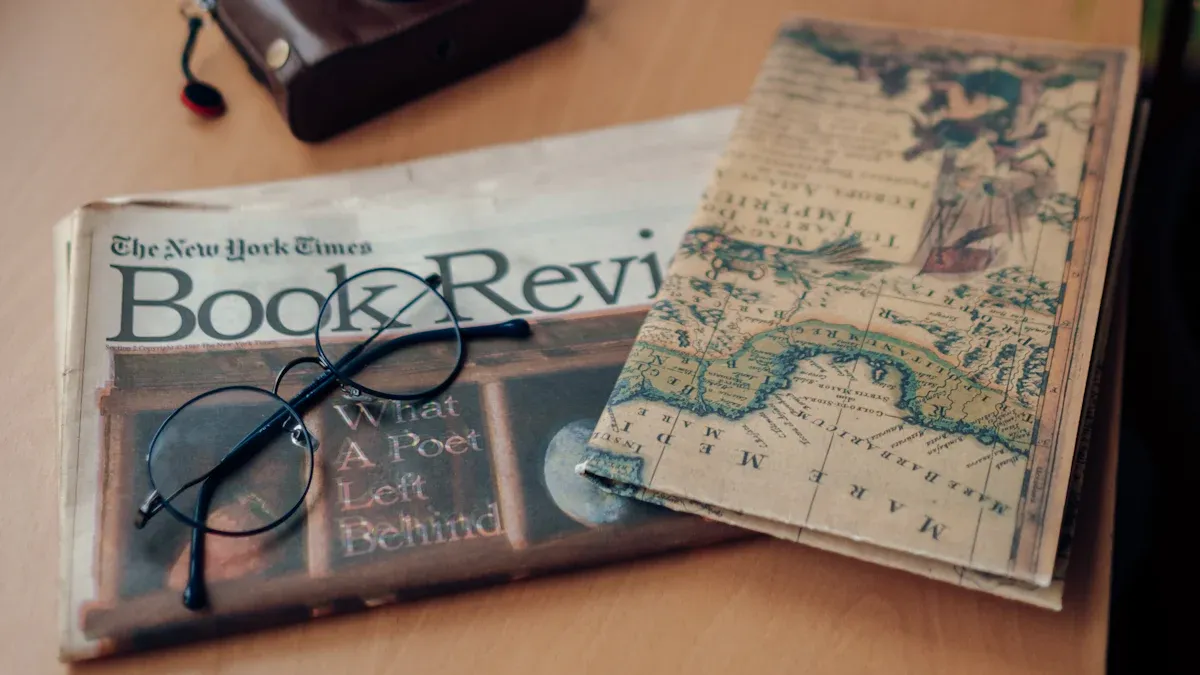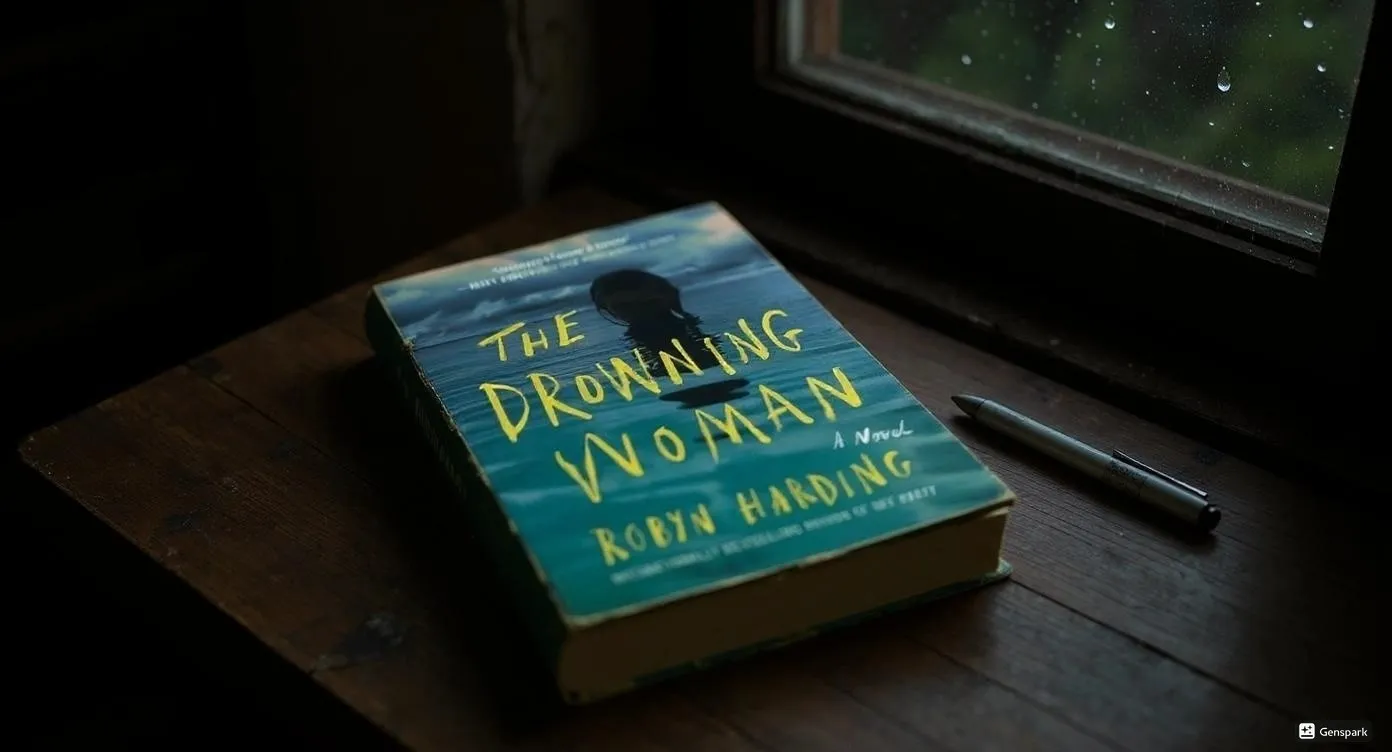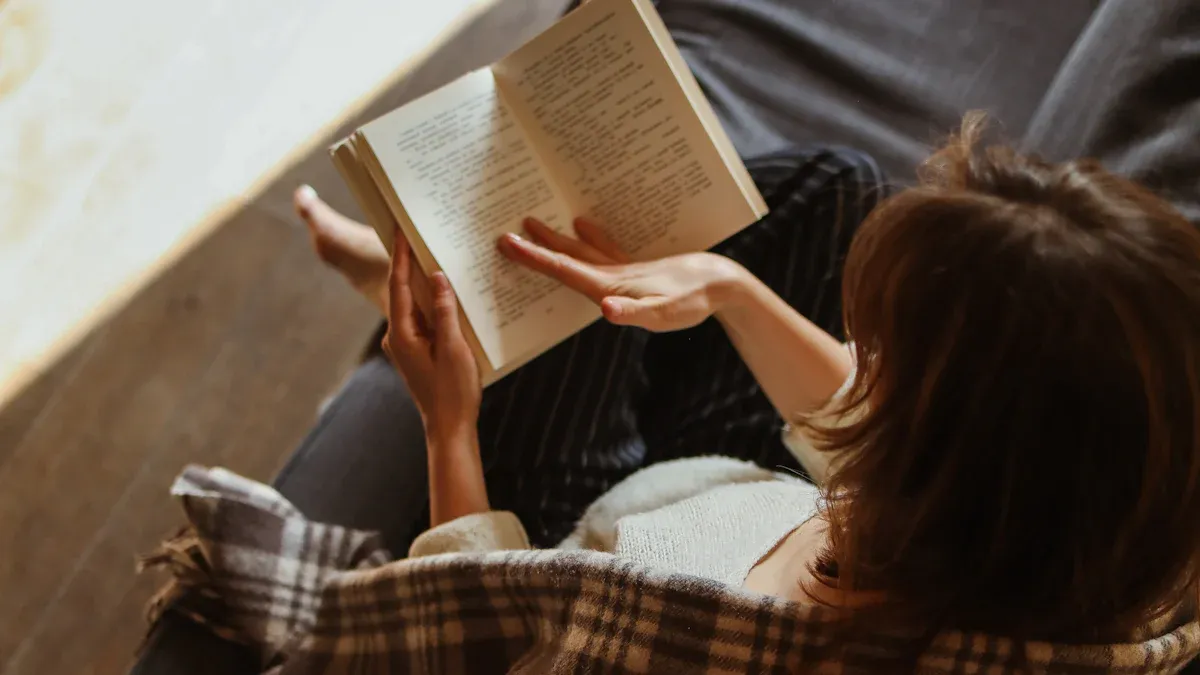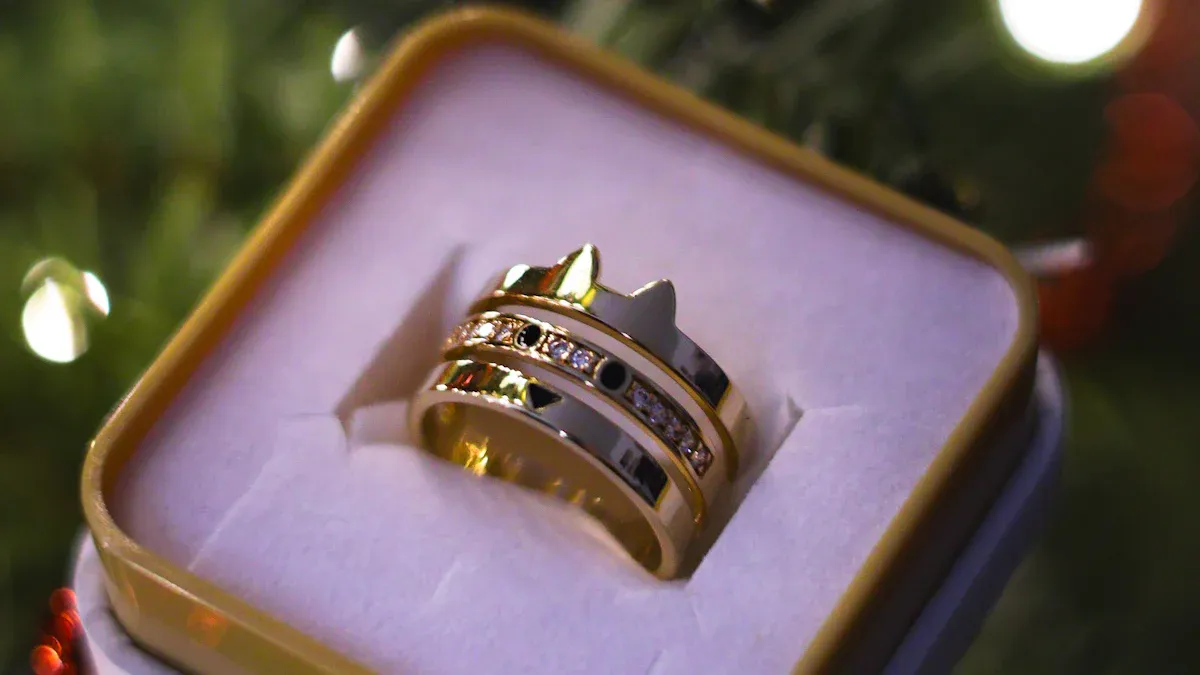I stayed up way too late flipping pages of We Could Be Magic by Marissa Meyer. Tabitha Laurie pulled me in from the first scene at Sommerland, a theme park that feels both dreamy and real. I felt every twist—some moments had me grinning, others made me pause and think.
Key Takeaways
We Could Be Magic mixes real problems with some magic.
This makes the story feel real and touching for teens and young adults.
The bright art and true characters make the story exciting.
They show ideas like self-worth, friendship, and believing in yourself. This graphic novel is good for readers who are 12 and older.
It gives good messages and has a fun, simple style. Teens and adults will both enjoy it.
Recommendation
Who Should Read
I’ll be honest, I picked up We Could Be Magic by Marissa Meyer thinking it would be a quick, light read. I ended up glued to the couch, ignoring my phone, and reading until my eyes hurt. If you love stories about finding yourself, summer jobs, or a sprinkle of magic, this book will probably hook you too.
Here’s who I think will enjoy it most:
Teens and young adults who like graphic novels with a mix of romance and self-discovery.
Readers who want a story about a girl working at a theme park, dealing with crushes, friendships, and family stuff.
Anyone who enjoys books with positive messages about body image and believing in yourself.
Fans of contemporary settings with a magical twist.
The book sits firmly in the Young Adult category. The main character, Tabitha, faces real-life challenges and magical surprises, which makes her journey relatable for anyone who remembers what it’s like to feel out of place or dream of something more.
Tip: If you’re a parent or teacher, I’d say this one fits best for mature middle schoolers and up. Some reviewers mention a few content concerns, but nothing too heavy for most teens.
Main Appeal
What really pulled me in? The mix of real feelings and a little bit of magic. I could almost smell the popcorn and hear the laughter at Sommerland. Tabitha’s story felt honest—awkward moments, big dreams, and all.
The art style pops with color and energy. Every page feels alive.
The story tackles self-worth and identity without getting preachy.
I saw myself in Tabitha’s struggles and cheered for her wins.
The romance is sweet, not sappy, and the friendships feel real.
To be fair, the writing leans a bit young, but the message sticks with you. I have to give props to Marissa Meyer for making a graphic novel that feels both fun and meaningful. If you want a book that leaves you smiling and maybe thinking a little deeper about yourself, We Could Be Magic by Marissa Meyer is worth a spot on your shelf.
Plot

Tabitha Laurie’s Journey
I have to admit, Tabitha’s story in We Could Be Magic by Marissa Meyer pulled me in right away. She starts out feeling lost, stuck in a summer job at Sommerland, and unsure about her place in the world. I saw a lot of myself in her—awkward, hopeful, and sometimes a little scared to take risks.
Tabitha faces real problems: friendship drama, family pressure, and her own self-doubt.
She dreams big but worries she’ll never fit in or stand out.
The magic in the story isn’t just about spells. It’s about believing in yourself, even when things get tough.
Watching Tabitha stumble, get back up, and try again made me root for her. Some scenes had me grinning, others left me thinking about my own choices. The plot moves quickly, with just enough twists to keep me guessing but not so many that I felt lost.
Themes
True Love and Dreams
I felt my heart squeeze every time Tabitha talked about her dreams. She wants real love, not just a fairy tale. I saw her wish for someone to see her for who she is, not just how she looks. That hit home for me.
The story shows that true love means being honest and brave, even when you feel scared. Tabitha’s dreams push her forward, even when things get tough. I loved how the book says it’s okay to want more and to chase what makes you happy.
Overcoming Obstacles
Tabitha faces a lot of problems. She deals with friendship drama, family stress, and her own doubts. I watched her mess up, try again, and grow stronger. That felt real. I’ve read studies about graphic novels, like the Amulet series, where characters change by facing hard things.
Teachers even use these stories to help students talk about choices and growth. In We Could Be Magic by Marissa Meyer, I saw Tabitha’s struggles make her braver and more confident. The art shows her feelings so clearly, I almost felt them myself.
Characters in graphic novels often:
Face big challenges
Make tough decisions
Learn about trust and responsibility
I think seeing Tabitha overcome her fears made me want to try harder in my own life.
Believing in Magic
Magic in this book isn’t just about spells or tricks. It’s about hope. Tabitha learns to believe in herself, even when things look impossible. I found myself rooting for her to find that spark inside. The story reminded me that a little bit of magic lives in all of us, if we just believe.
Characters
Tabitha’s Growth
I saw so much of myself in Tabitha. She starts out unsure, hiding behind her hoodie and hoping no one notices her. By the end, I watched her stand taller, speak up, and even take a few risks.
That shift felt real. I’ve read a lot of books where the main character changes overnight, but Tabitha’s growth felt slow and honest. She messes up, gets embarrassed, and sometimes wants to quit. I loved that she didn’t magically become confident. She worked for it.
Tabitha learns to trust herself.
She faces her fears, even when her voice shakes.
Her journey isn’t perfect, but it’s hopeful.
I found myself rooting for her every step. I even got a little teary when she finally believed she could be “magic” too.
Relationships
The relationships in this book stood out to me. Tabitha’s friendships and crushes felt messy and real. I noticed how the story uses small moments—awkward jokes, quick glances, and honest talks—to show how people connect or drift apart.
It reminded me of stories like Everything That Rises Must Converge, where family bonds show through tough conversations, or The Things They Carried, where trust and fear shape every interaction.
Some friendships felt “balanced,” with easy laughter and support.
Others seemed “hampered” or “entangled,” full of mixed signals and misunderstandings.
I read a study that said teens have all kinds of relationship patterns—some are flexible, some get stuck. I saw that here. The romance didn’t feel forced. Tabitha and her crush share similar strengths, but that doesn’t mean everything is perfect. I liked that the book shows how people can care for each other, even when they’re still figuring themselves out.
Art and Style

Visuals
The art in We Could Be Magic caught my eye right away. I kept looking at the pictures, not just reading the words. The colors are bright, and every picture looks full of life and feeling. The style uses lots of faces that show feelings and backgrounds with many details.
There are many different colors on each page. This kind of art works well for me. It makes me think of flower paintings or portraits. Those types of art usually get the most likes in art studies.
Genre | Mean Squared Error (MSE) | Interpretation |
|---|---|---|
Flower painting | Lowest MSE | Highest audience approval |
Portrait | Low MSE | High audience approval |
Cityscape | Moderate-low MSE | Moderately high approval |
Landscape | Moderate-low MSE | Moderately high approval |
Abstract | Moderate MSE | Lower audience approval |
Still life | Higher MSE | Lower audience approval |
Nude painting | Highest MSE | Lowest audience approval |
The book’s art uses lots of color changes and lines that look rough or bumpy. This makes each part of the story feel more fun and real. I read that people like art more when it has many colors and cool shapes. The pages in this book really show that. Sometimes, I just stopped to look at all the small details.
Storytelling
The story is told with both pictures and words, and that kept me interested. I felt like I was with Tabitha, feeling what she felt. The pictures do more than just show what happens. They help you feel like you are in her world. I read that stories like this are better than just facts because they make you care and want to keep going.
The story feels special, like it was made for readers who want to see themselves in the characters.
The mix of words and art helps you get Tabitha’s feelings without long talks.
The book uses small things, like a look or a sigh, to say a lot.
Some parts go by fast, and I wanted more time with some characters. But the art and the way the story is told made me feel close to the book. I would give the art and style a 7 out of 10.
We Could Be Magic by Marissa Meyer: Age Suitability
Recommended Age
I always look for books that fit the right age group. With We Could Be Magic by Marissa Meyer, I’d say it works best for readers ages 12 and up. I breezed through it, but I kept thinking about my younger cousins. Would they get it? Probably, if they’re in middle school or older. The story feels safe for teens, but it doesn’t talk down to them.
Middle schoolers who like graphic novels will feel right at home.
High schoolers might see themselves in Tabitha’s struggles.
Adults who love YA stories could enjoy it too, but the writing leans young.
If you’re a parent or teacher, I’d give this a green light for most tweens and teens. Nothing too chilling or jaw-dropping, just honest feelings and a little magic.
Strengths and Weaknesses
Highlights
I’ll be honest, I finished this book in one sitting. I lost track of time and even forgot my tea was getting cold. Here’s what really worked for me:
Emotional depth: Tabitha’s feelings felt real. I saw her struggle, hope, and grow. I even caught myself rooting for her out loud.
Art style: The colors pop off the page. Every panel feels alive and full of energy. I loved how the art showed Tabitha’s mood without needing a single word.
Relatable characters: I saw pieces of myself in Tabitha and her friends. Their awkward moments and small victories made me smile.
Positive messages: The story handles body image and self-worth with care. It never felt forced or fake.
Theme park setting: Sommerland almost jumps off the page. I could almost hear the rides and taste the cotton candy.
Critiques
No book is perfect, and this one has a few bumps:
Pacing: Some scenes move too fast. I wanted more time with certain characters, especially Tabitha’s friends.
Writing style: The dialogue sometimes feels a bit young. Older teens might wish for more complexity.
Predictable moments: A few plot twists felt easy to spot. I hoped for more surprises.
Side characters: Some friends and family members fade into the background. I wanted to know them better.
I finished We Could Be Magic by Marissa Meyer with a smile.
The story felt honest and hopeful.
I saw myself in Tabitha’s struggles and wins.
To be fair, some parts moved too fast, but I still enjoyed it. I’d rate it a solid 7/10 for fans of heartfelt YA graphic novels.
Sip The Unknown—Discover Stories You Never Knew You’d Love!
Dionysus Reviews Has A Book For Every Mood
Biography & Memoir
Fiction
Mystery & Detective
Nonfiction
Philosophy
Psychology
Romance
Science Fiction & Fantasy
Teens & Young Adult
Thriller & Suspense
Frequently Asked Questions
Is We Could Be Magic a good pick for reluctant readers?
I think so! The graphic novel format and bright art make it easy to follow. Short chapters and real feelings kept me turning pages.
Does the story focus more on magic or real-life issues?
Both matter, but I felt the real-life struggles stood out more. The magic adds hope, but Tabitha’s journey with friends and family felt most honest.
Can adults enjoy this book too?
Absolutely! I found myself smiling and thinking back to my own awkward years. The story feels young, but the themes hit home for any age.









